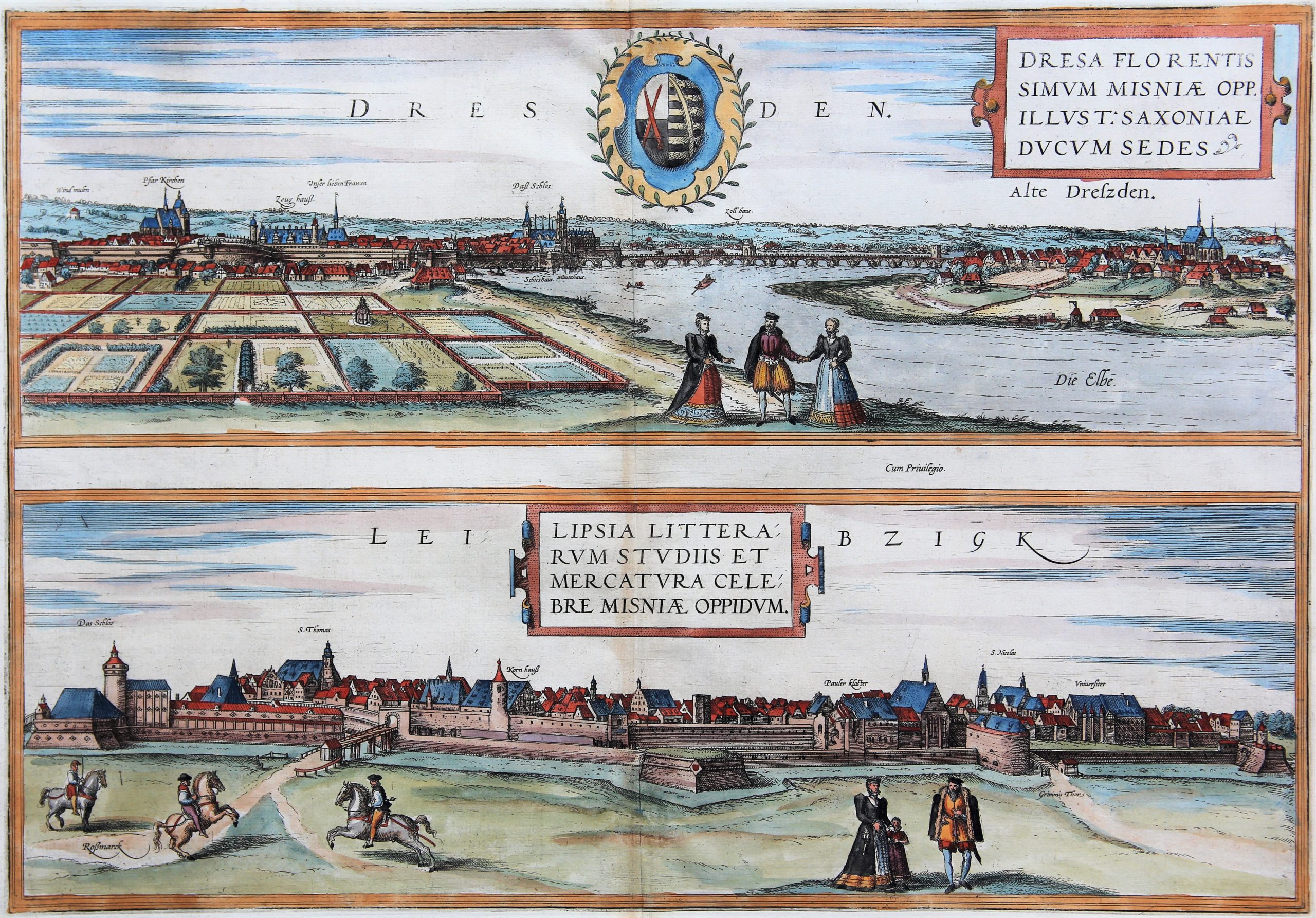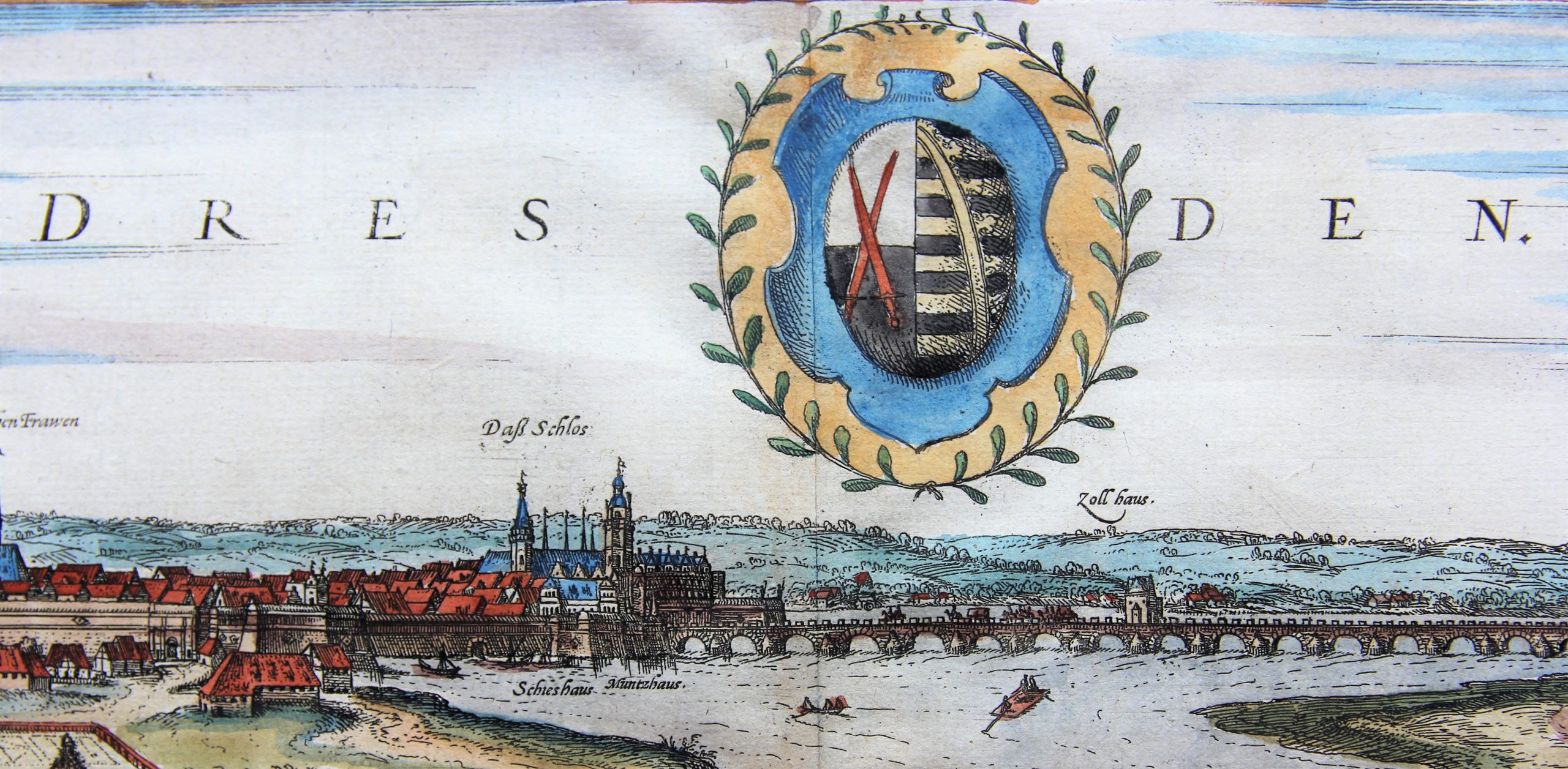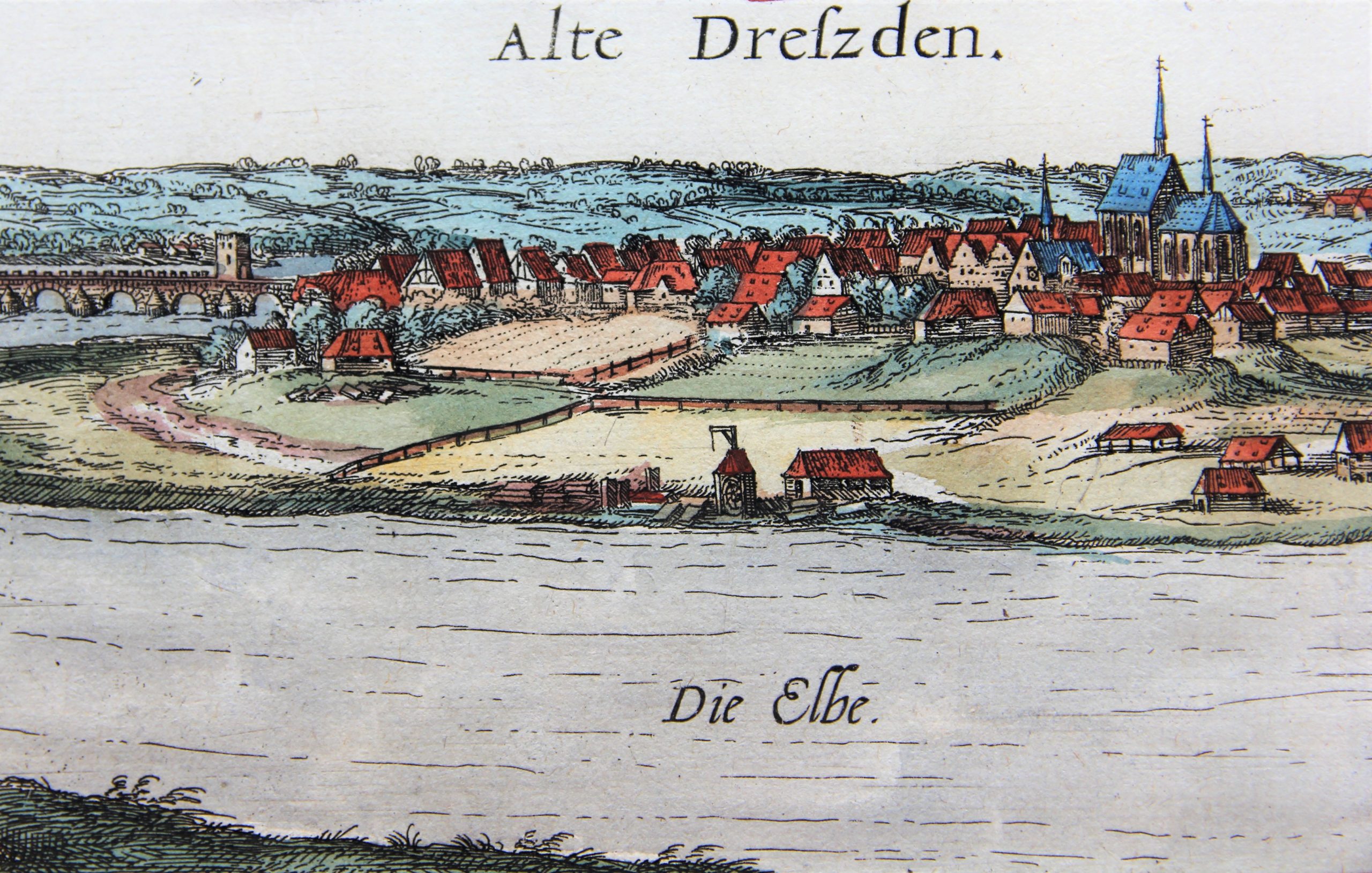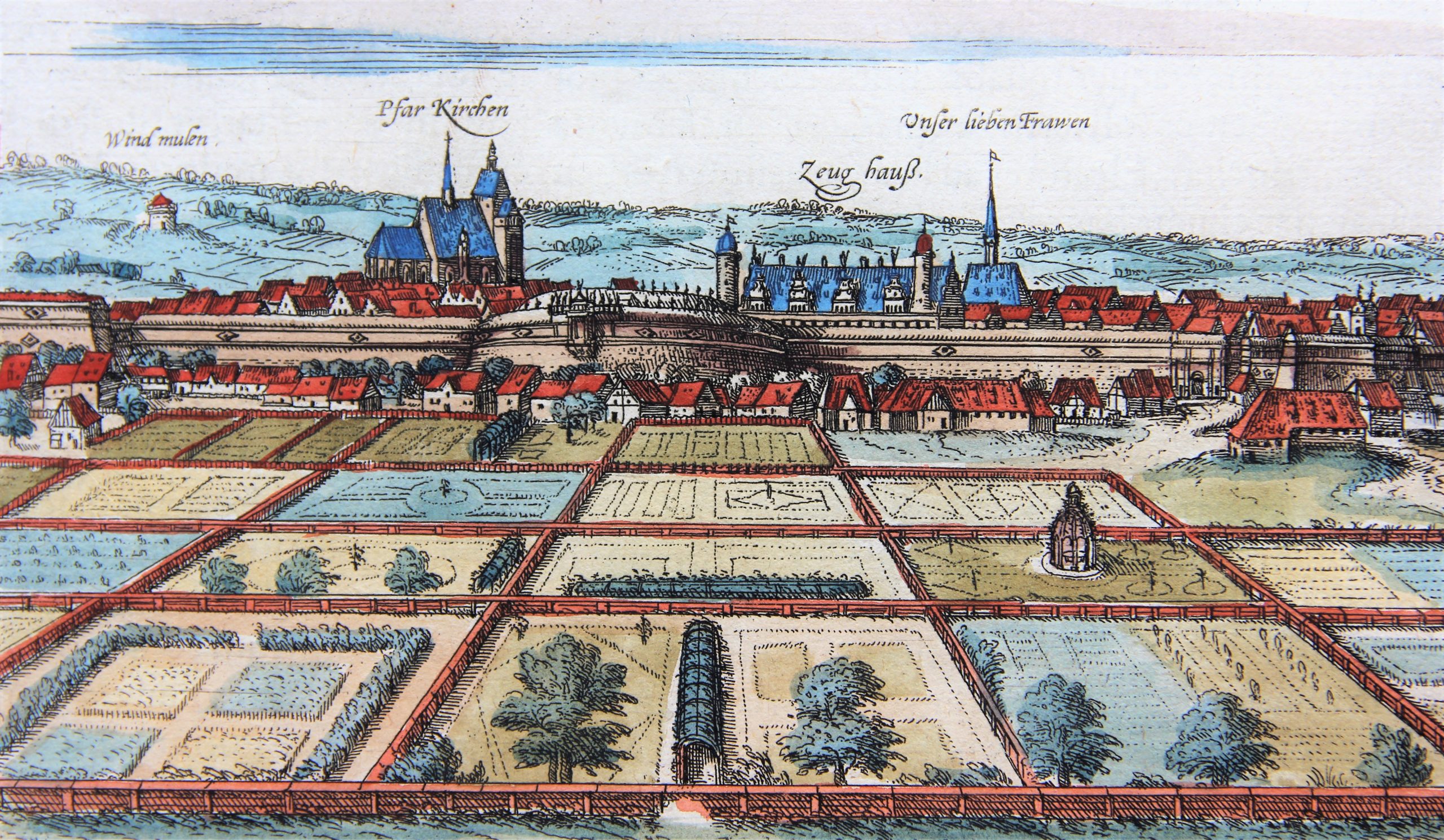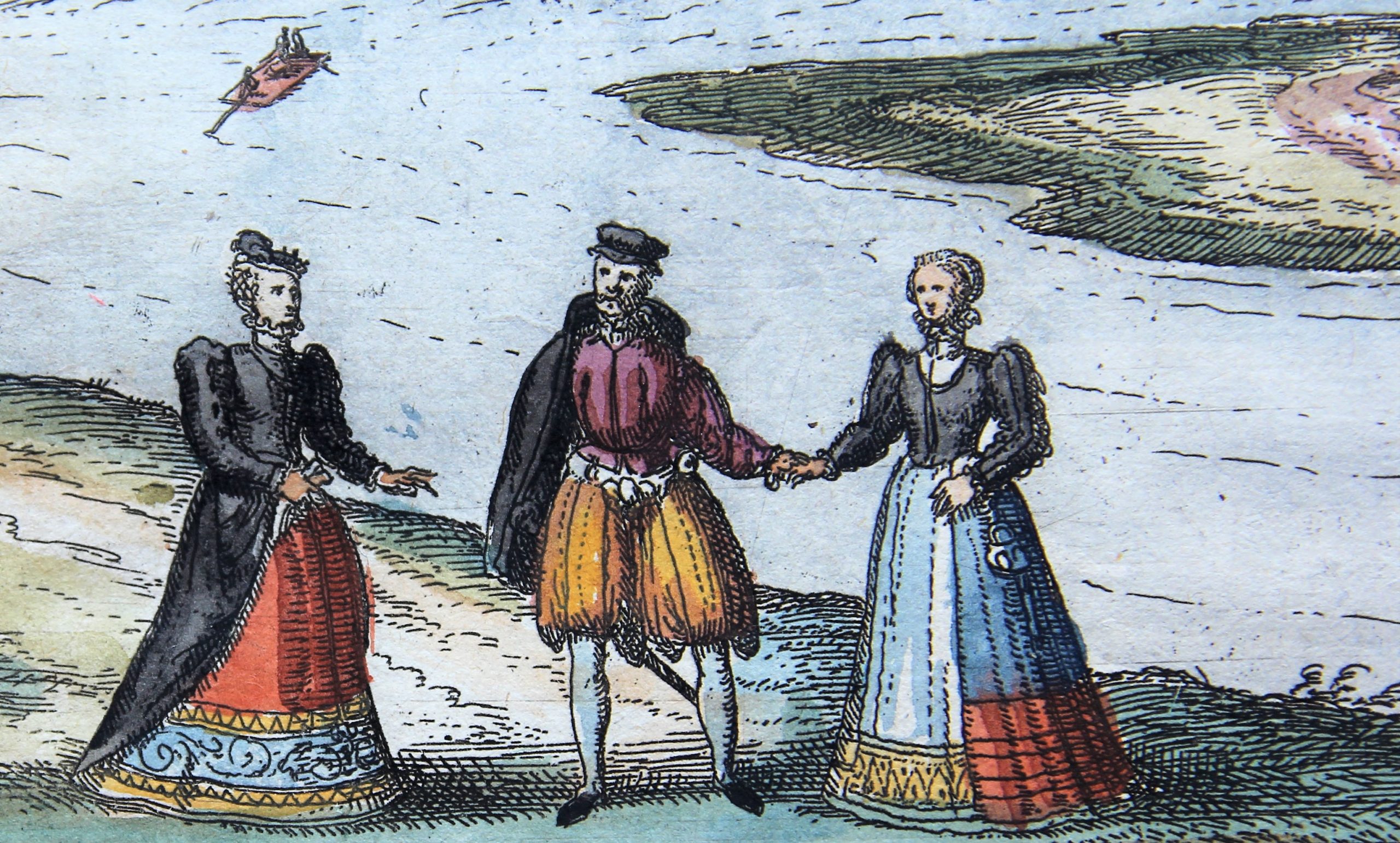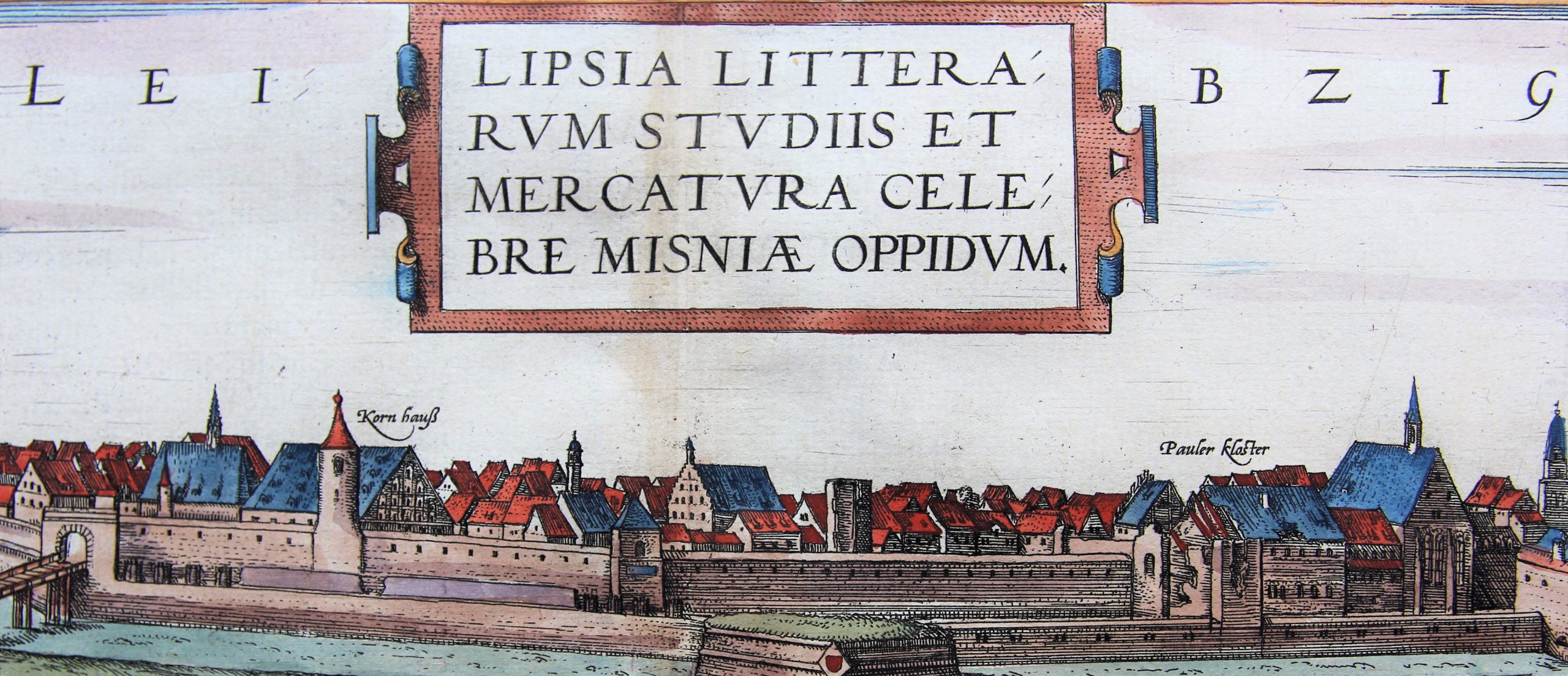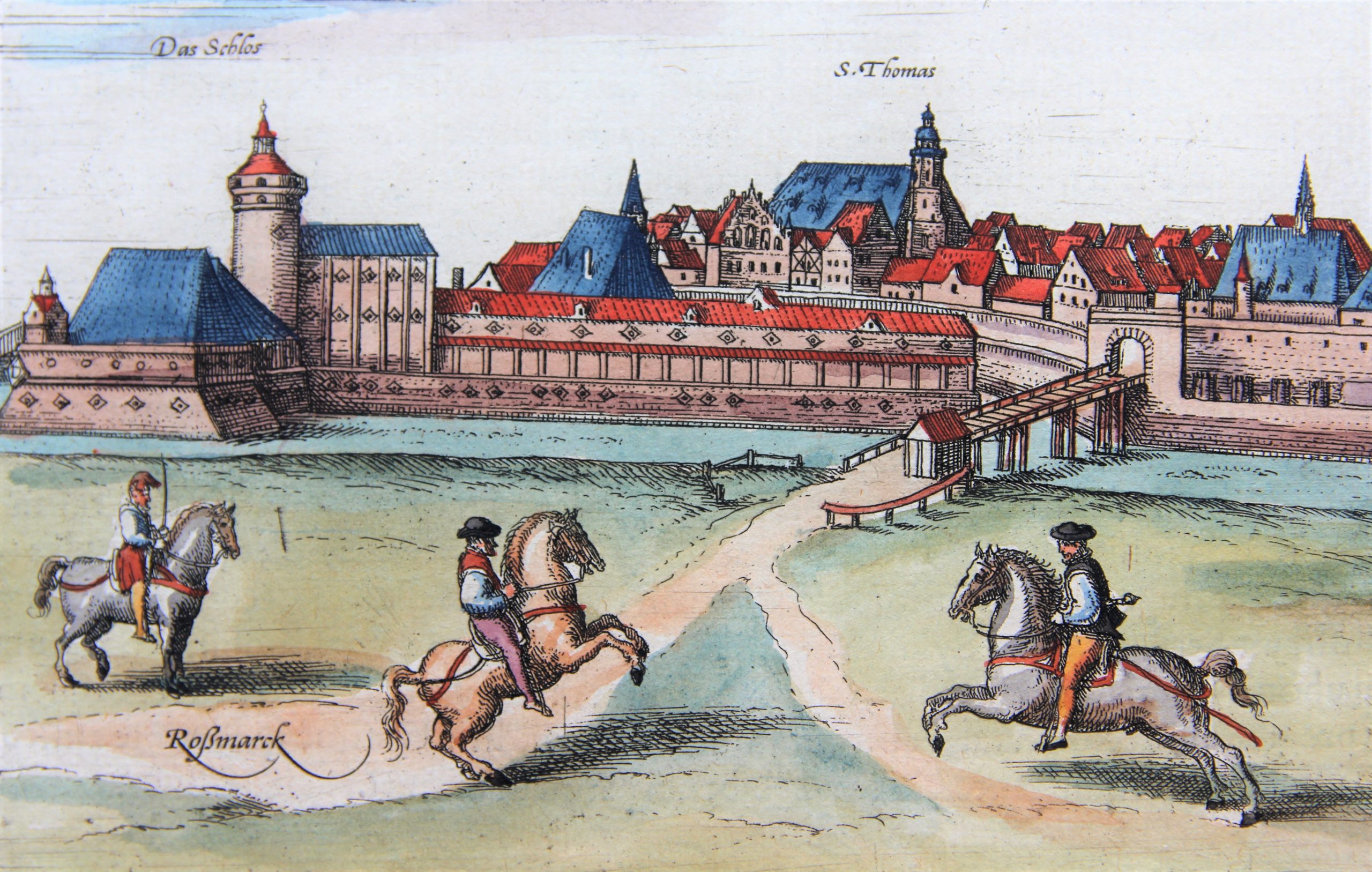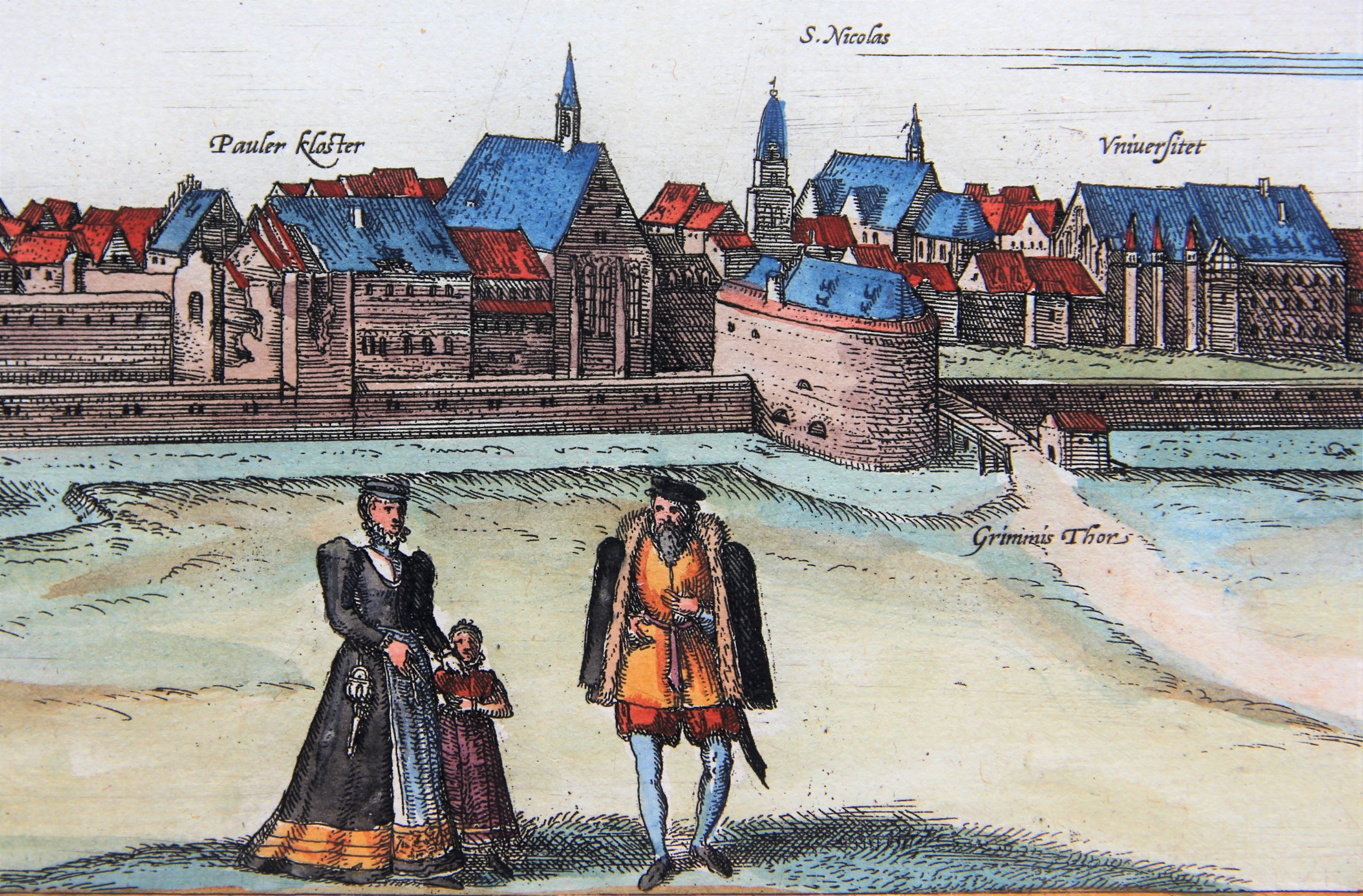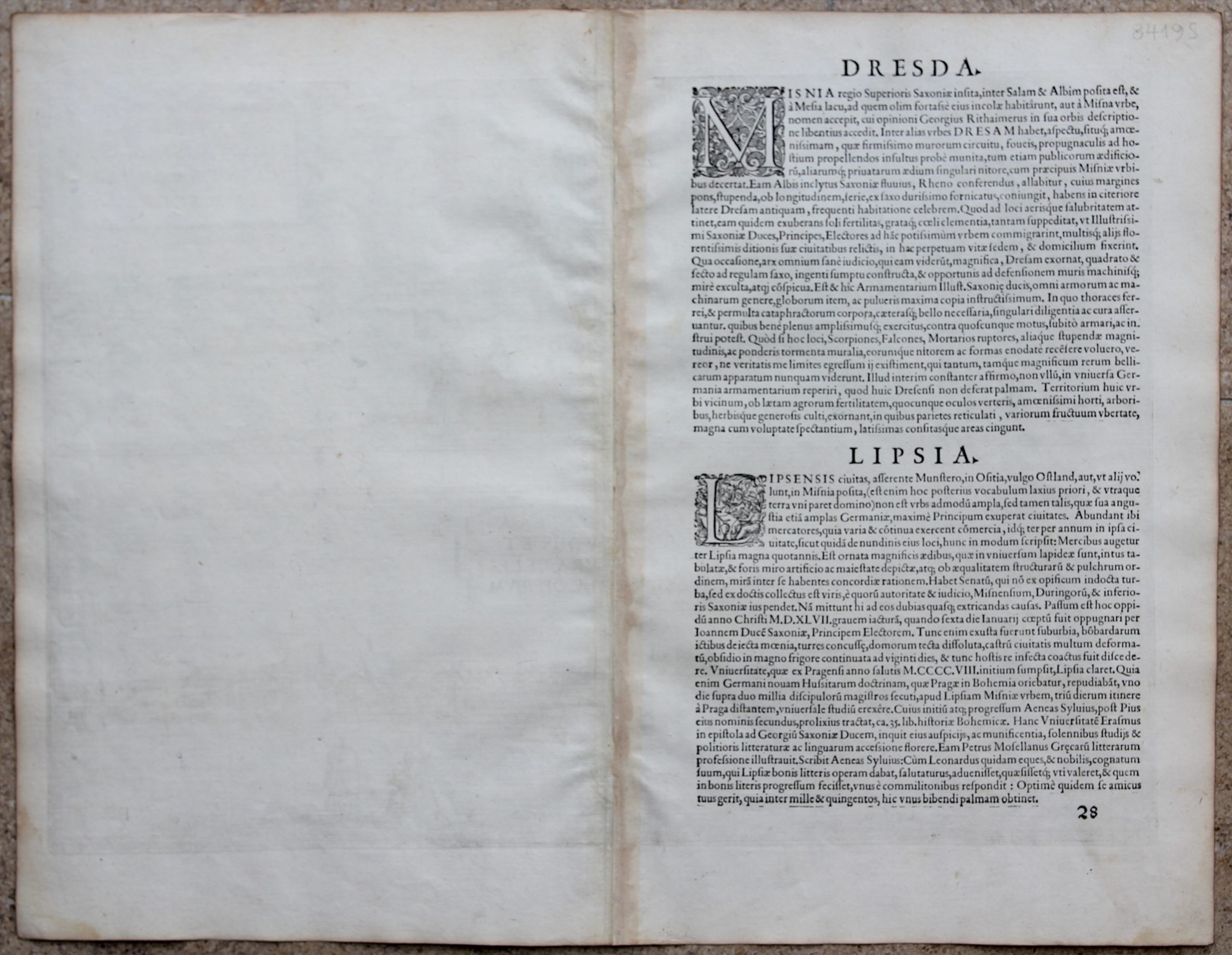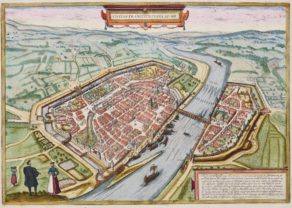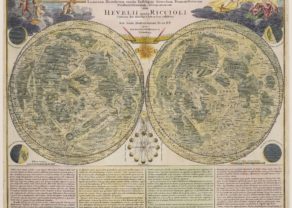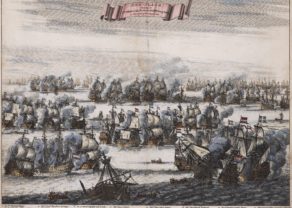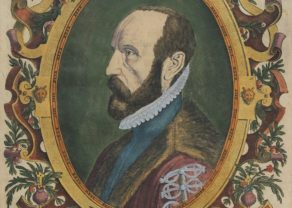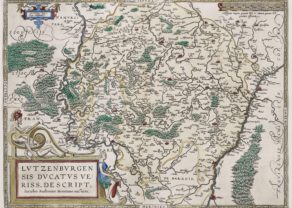Dresden and Leipzig (Saxony)
The ultimate double city map!
Detail
Date of first edition: 1572
Date of this map: 1572
Dimensions (not including margins): 33 x 47,8 cm
Dimensions (including margins): 40,2 x 52,2 cm
Condition: Very good. Strong paper with minor browning. Wide margins. Centre fold as published. Nice colouring.
Condition rating: A
Verso: text in Latin
Map references: Van der Krogt 4, 1142, state 2 (with privilege; Fauser 3236, Taschen Br. Hog, p. 86.
From: Civitates Orbis Terrarum, Vol. I
In stock
Dresden commented by Braun
“The Elbe, which is not dissimilar to the Rhine and which flows past Dresden, is crossed by a large stone bridge, which is most admirable in view of its length and its distinctive stonework. On this side lies the well known town of Dresden; since this place is beneficial to the health in view of its good air, His Most Serene Highness, the Duke and Elector of Saxony, […] moved his permanent seat and residence here. The town of Dresden was consequently embellished with an exceptionally beautiful palace […] built of square stones hewn with a straight edge with remarkable skill.”
TRANSLATION OF CARTOUCHE TEXT: Dresden, the flourishing Meissen town and illustrious residence of the Dukes of Saxony. (Dresa Florentissimum Misniae Opp. Illust: Saxoniae Ducum Sedes)
Taschen on Dresden
In the first half of the 16th century Dresden – here seen at a distance from the direction of Pirna – still appears relatively modest in size. Clearly indicated by the caption on the left is the Protestant parish church (Pfar Kirchen) in which the Reformation was officially introduced in Dresden in 1539 by Henry the Pious. Further right is the arsenal (Zeughauss), an important Renaissance building, which was converted into the Albertinum in the 19th century. Further right again is the town’s oldest church of Unser Lieben Frauen (today the Frauenkirche), with a miracle-working icon that drew pilgrims from early on. The palace was being transformed into a Renaissance palace under Moritz of Saxony. Not until the 18th century would the “Florence on the Elbe”, as Dresden is known, assume the architectural face for which it is so famous today, with the Zwinger, Frauenkirche, Hofkirche and Semper Opera House.
Leipzig commented by Braun
“Leipzig is not a very big town, but it surpasses many another city, both German and princely. For there are many merchants here who hold a fair in the town three times a year […]. This town possesses many large stone houses, all panelled in wood inside and decorated with paintings outside. A council of learned men meets in Leipzig in order to pass judgement on the disputes that are brought before them […]. It also possesses a splendid university, which was transferred from Prague to here in 1408. For when the Germans refused to accept the new teachings of Hus that were spread in Prague, over 2,000 students and their teachers left in a single day and went to Leipzig and resumed their studies there.”
CARTOUCHE: Leipzig, famous town of the sciences and trade in the land of Meissen. (Lipsia Litterarum Studiis et Mercatura Celebre Misniae Oppidum)
Taschen on Leipzig
This plate shows the city around 1570 from a very low position, with three horsemen in the left foreground as a reference to the horse market. After receiving market privileges in the year 1165, Leipzig developed into a leading trade-fair centre, achieving fame across Europe after having been awarded imperial trade-fair rights in 1497.
